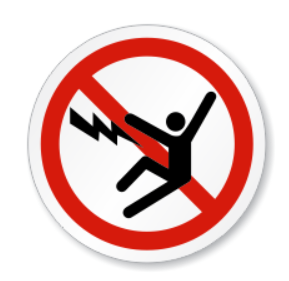Understanding the Risks and the Consequences
At times, I’m a little amazed at the lack of understanding displayed by electricians, engineers, supervisors, managers and even safety consultants about the risks when “trained, experienced and qualified electrical workers” are permitted to work on electrical equipment while still energized without the need for any oversight, authorization, or justification.
As a journeyman electrician, I understand our years of experience and high-quality training have provided us with crucial knowledge that sets us apart from unqualified workers. We possess, through hands-on development, the skills necessary to distinguish exposed live parts from other parts and an understand of the nominal system voltage and the clearance distances, also known as the “minimum approach distance” (MAD) as identified by 1910.332(b). And we also understand the design of the equipment and how to correctly use PPE, insulated tools, test equipment, insulated materials, and the techniques required to avoid the hazards.
While all these attributes most certainly give us an edge over the non-electrical workers, one fact remains – we are still humans with a propensity to make mistakes. But when it comes to electrical energy, such mistakes can mean our lives, even if the circuit is energized at “only 120 volts.”
What Does Your Electrical Safety Program Say?
Employers who have incorporated NFPA 70E®¹ into their electrical safety programs understand the dangers and control energized work through the Energized Electrical Work Permit (ESWC) process. But for unknown reasons, some frontline electricians and technicians, who are the ultimate stakeholders in the electrical safety program, take great personal offense and insult because they are required to seek authorization from management and/or the safety department by providing a written justification before they are allowed work on equipment in an energized state.
What these workers fail to comprehend is the fact their employers care about their wellbeing and give them the best possible chance of returning home at the end of the work shift in the same condition they came to work in. Unfortunately, there are far too many employers on the other end of the ‘care spectrum’ who are only concerned about the bottom line of “get er’ done,” regardless of the risks the employees must face.
So, if your company has a stringent electrical safety program in place, count your blessings because many others don’t, and, sadly, the annual workplace fatality reports attest to this position.
OSHA’s Stance on Energized Work
I’ve often heard people say something like, “NFPA 70E® requires electrical equipment to be deenergized before working on it, but OSHA is less stringent and allows us to work it hot because we’re trained and qualified.”
Is this an accurate statement about OSHA’s stance on energized work?
First, let’s take a look at the regulations pursuant to 29CFR 1910, subpart S. Right up front under 1910.333(a)(1), we read “Deenergized parts. Live parts to which an employee may be exposed shall be deenergized before the employee works on or near them, unless the employer can demonstrate that deenergizing introduces additional or increased hazards or is infeasible due to equipment design or operational limitations.” (emphasis added)
This very first sub-step does not distinguish if the employee is qualified or unqualified but emphatically emphasizes the exposed live (energized) parts shall be deenergized before the employee is permitted to work on or near them. The word “shall” is used by laws, regulations, and standards to express what is mandatory and nonnegotiable. So, the default from a regulatory position is for the equipment to be deenergized, regardless of the qualification status of the worker.
Limited Conditions to Deenergizing
At the same time, OSHA provides us with four practical limiting caveats to the contrary, but only if the employer can demonstrate the following about the equipment:
- Deenergizing introduces additional or increased hazards.
- Infeasibility due to design.
- Operational limitations.
- Circuits operating at less than 50 volts with no exposure to electrical burns or explosion from electric arcs.
At this point, I’d like to temporarily transition to a related but separate subject. The term “deenergized” as used by OSHA can be somewhat subjective and confusing unless it’s understood in context within the regulations. Because of the ambiguity, I’ve released a previous article titled, “De-energized – More Than Flipping the Switch to Off,” which may help you grasp the specifics.
Now, moving back to the topic at hand regarding OSHA’s position on energized work. Based on the regulations alone, we can rest our case here that the first priority of OSHA is for the electrical hazard to be eliminated, other than for the four limited conditions.
Let’s Be Clear
However, to make it crystal clear and to completely eradicate any doubts or questions that OSHA takes a hard stance to protect workers from electric shock or arc flash hazards, OSHA released the following sobering statement:
“Obviously, none of the fatalities was caused by a deenergized circuit (though some fatalities involved circuits that were thought to be deenergized). For this reason, OSHA has not accepted the argument that a qualified employee can work on energize circuits as safely as he or she can work on deenergized circuits. Therefore, OSHA is not leaving it to the employer’s discretion as to whether or not to deenergize electric circuits on the basis of convenience, custom or expediency.”2
This positional statement by OSHA wasn’t a new revelatory stance in 2023 but was established over three decades ago on August 6, 1990.
Therefore, no uncertainty should exist that OSHA’s historical and current stance has been, is, and will always be for employers’ and employees’ first priority to be the elimination of the electrical hazard prior to performing work. And this aligns perfectly with NFPA 70E®, article 110.1 “Priority – Hazard Elimination shall be the first priority in the implementation of safety-related work practices.”
It’s a travesty when workers are forced to take unnecessary risks in order to earn a paycheck, but it’s foolishness when workers knowingly take unnecessary risks when they don’t have to.


